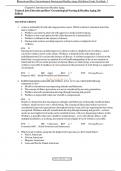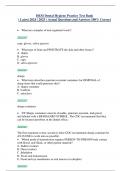Exam (elaborations)
Test bank for ebersole and hess gerontological nursing and healthy aging 5th edition touhy all chapters 1-28 full complete
Test bank for ebersole and hess gerontological nursing and healthy aging 5th edition touhy all chapters 1-28 full coTest bank for ebersole and hess gerontological nursing and healthy aging 5th edition touhy all chapters 1-28 full complete Test bank for ebersole and hess gerontological nursing and ...
[Show more]












